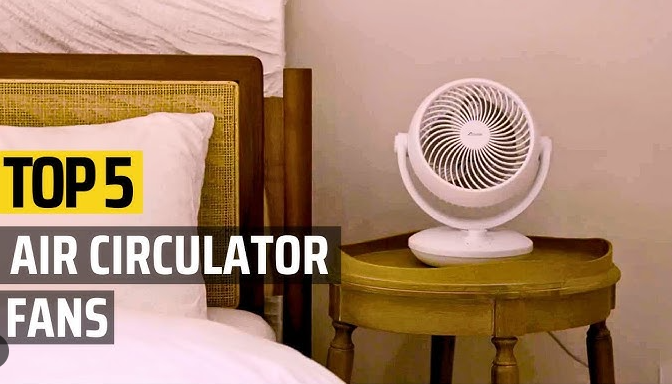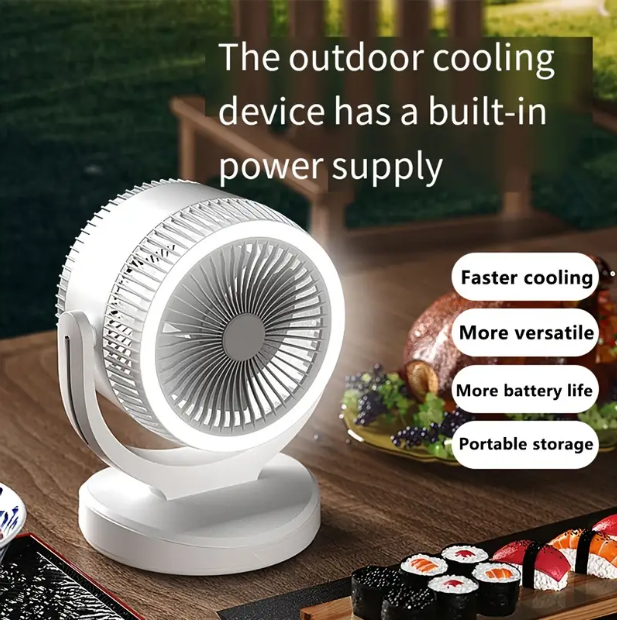For reliable and budget-friendly cooling, Honeywell electric fans are a go-to choice for many households. Renowned for their durability, performance, and practical features, these fans deliver excellent value. This Honeywell electric fan review explores the top Honeywell models for 2025, assessing their cooling power, design, and functionality. From electric fan setup to electric fan troubleshooting, we’ll guide you through deciding if a Honeywell fan is the best electric fan for your needs. Our electric fan tips will help you optimize cooling efficiency and maintain performance.
Why Choose a Honeywell Electric Fan?
Honeywell electric fans strike a balance between affordability, efficiency, and versatility. Offering airflow from 500 to 5100 CFM, they suit small rooms to large spaces. Consuming 10-150 watts (about 1-3 cents per hour), they’re far more energy-efficient than air conditioners. With features like quiet operation, oscillation, and timers, they’re ideal for bedrooms, offices, or living areas. This Honeywell electric fan review evaluates whether these fans meet your cooling needs with practical benefits and minimal drawbacks.
Pros of Honeywell Electric Fans
Honeywell fans offer several advantages that make them a popular choice. Here are the key benefits:
- Cost-Effective: Priced between $15-$100, Honeywell fans are affordable compared to premium brands costing $250+.
- Strong Cooling: Delivering 500-5100 CFM, they effectively cool small (100 sq ft) to large rooms (400+ sq ft).
- Quiet Operation: Many models, especially QuietSet series, run at 25-40 dB on low, perfect for bedrooms or workspaces.
- Convenient Features: Timers (1-8 hours), remotes, and 3-8 speed settings enhance usability and energy savings.
- Compact and Portable: Lightweight designs (1.3-15 pounds) and slim profiles fit tight spaces, ideal as portable electric fans.
- Reliable Build: Sturdy construction with 1-5 year warranties ensures longevity.
- Versatile Options: Oscillation, adjustable tilt, and dual-fan designs cater to diverse cooling needs.
These pros make Honeywell fans a practical choice for budget-conscious buyers seeking dependable cooling.
Cons of Honeywell Electric Fans
Despite their strengths, Honeywell fans have limitations. Here are the key drawbacks:
- Noise on High Settings: Models like the TurboForce series can be loud (50-65 dB) on high speeds, disrupting sleep or work.
- Limited Airflow for Large Spaces: Smaller models (500-1000 CFM) may struggle in rooms over 400 sq ft.
- Plastic Build: Many use plastic, which may feel less durable than metal and show wear over time.
- Challenging Cleaning: Internal blades or grilles can be hard to access, complicating thorough electric fan cleaning.
- Basic Models Lack Features: Entry-level models (e.g., HT-900) lack timers or remotes, reducing convenience.
- Remote Issues: Some users report unresponsive remotes, requiring frequent battery replacements.
- Safety Risks: Open grilles or unstable bases may pose risks for children, requiring careful placement.
These cons highlight the importance of matching the fan to your specific needs.
Electric Fan Setup: Getting Started
Proper electric fan setup ensures your Honeywell fan performs at its best. Follow these steps:
- Unpack and Inspect: Check for all components, such as the base, remote, and screws, ensuring no damage.
- Assemble Securely: Attach the base as per the manual, using screws or clips for stability (e.g., QuietSet’s two-part base).
- Position Strategically: Place on a flat surface in a corner or near a window to maximize airflow. Avoid obstructions like furniture.
- Plug In and Test: Connect to power and test speeds, oscillation, and timer settings to confirm functionality.
Positioning opposite a wall or at a 90-degree angle enhances air circulation. Ensure stability to prevent tipping around children or pets.

How to Use a Honeywell Electric Fan Effectively
Maximize cooling with these electric fan tips:
- Use Oscillation: Enable 70-180 degree oscillation to distribute air evenly across the room.
- Create a Cross-Breeze: Place near an open window to pull in cooler air or pair with a bowl of ice for a chilled effect.
- Adjust Speeds: Use low speeds (e.g., Sleep or Whisper) for quiet operation and high speeds (e.g., Power Cool) for rapid cooling.
- Leverage Timers: Set timers (1-8 hours) to save energy, especially for nighttime use.
Pairing with an air conditioner can enhance cooling, allowing you to raise the AC temperature and save energy.
Electric Fan Maintenance: Keeping Your Honeywell in Top Shape
Regular electric fan maintenance ensures longevity and performance. Follow these steps:
- Clean Regularly: Dust on blades or grilles reduces airflow. See our electric fan cleaning guide below.
- Inspect Cords: Check for fraying or damage to the power cord or plug. Stop using if issues are found.
- Tighten Components: Secure loose screws or parts to prevent vibration or wobbling.
- Store Properly: Store in a dry, dust-free area when not in use to protect components.
Consistent maintenance minimizes issues like dust buildup and ensures efficient operation.
How to Clean a Honeywell Electric Fan
Electric fan cleaning is crucial for maintaining airflow and air quality. Here’s how to clean your Honeywell fan:
- Unplug the Fan: Disconnect from power to ensure electric fan safety.
- Remove Grilles or Covers: Detach grilles or covers as per the manual, often by unscrewing or unclipping (note: internal access may be limited).
- Clean Blades: Vacuum dust or wipe blades with a dry cloth. Use a damp cloth with mild soap for stubborn dirt, avoiding electronics.
- Wash Grilles: Soak removable grilles in warm, soapy water, scrub gently, and dry thoroughly.
- Reassemble and Test: Reassemble and test all functions to confirm proper operation.
Clean every 2-4 weeks during heavy use to prevent dust buildup and maintain performance.
Electric Fan Troubleshooting: Fixing Common Issues
Even the best electric fan may face problems. Here’s a guide to electric fan troubleshooting for Honeywell models:
- Fan Won’t Start: Check the power cord, plug, or outlet. Test the outlet with another device.
- Weak Airflow: Dust buildup can reduce performance. Clean blades or grilles thoroughly.
- Excessive Noise: Loose parts or debris may cause rattling. Tighten screws or remove obstructions.
- Unresponsive Remote: Replace batteries or ensure the remote is aimed correctly at the fan’s sensor.
If issues persist, contact Honeywell’s customer service or check the warranty (typically 1 year).
Electric Fan Safety: Staying Safe
Electric fan safety is essential, especially for models with open grilles. Follow these guidelines:
- Avoid Water: Keep fans away from water or damp areas to prevent electrical hazards.
- Child and Pet Safety: Place fans out of reach or choose models with tight grilles to prevent fingers or paws from accessing blades.
- Limit Continuous Use: Use timers to avoid overnight operation, reducing overheating risks.
- Inspect Regularly: Check cords and components for wear before use.
These precautions ensure safe operation of your Honeywell fan.

Top Honeywell Electric Fans for 2025
Based on recent testing and user feedback, here are the top Honeywell electric fans for 2025, evaluated for cooling power, features, and value:
- Honeywell QuietSet Whole Room Tower Fan (HYF290B): This 40-inch tower fan (10 x 10 x 40 inches, 9.2 pounds) delivers 1000-1500 CFM with eight speeds and 90-degree oscillation. Its 1-8 hour timer, remote, and quiet operation (25 dB on low) make it ideal for bedrooms. The sturdy base and dimmable controls enhance usability, though cleaning internal blades is challenging. Pros: Quiet, affordable ($54-$75), versatile. Cons: Noisy on high (50 dB), complex cleaning. Best for: Quiet bedroom cooling.
- Honeywell TurboForce Tower Fan (HYF500): This 32-inch dual-fan tower (12 x 12 x 32 inches, 8.8 pounds) offers 1000-1800 CFM with six speeds and 15 comfort settings via dual fans (one pivoting). Its slim design suits medium rooms, but it lacks a timer and is noisy (50-65 dB). Pros: Powerful, adjustable airflow. Cons: Noisy, no timer. Best for: Medium rooms needing strong airflow.
- Honeywell TurboForce Power Fan (HT-900): This compact desk/floor fan (11 x 6 x 11 inches, 1.3 pounds) delivers 500-1000 CFM with three speeds and 90-degree manual tilt. Fully assembled, it’s powerful for small spaces but noisy (up to 65 dB) and lacks a timer or remote. Pros: Affordable ($15-$25), portable, strong airflow. Cons: Loud, basic features. Best for: Budget-friendly personal cooling.
- Honeywell QuietSet Personal Table Fan (HTF210B): This small desk fan (13 x 8 x 8 inches, 2 pounds) offers 500-800 CFM with four speeds and oscillation. Quiet at 30 dB on low, it’s ideal for offices or nightstands but has lower airflow for larger spaces. Pros: Quiet, compact, affordable ($20-$30). Cons: Limited range, no timer. Best for: Personal desk cooling.
- Honeywell Carmel 48-Inch Ceiling Fan: This ceiling fan (48 inches, ~15 pounds) delivers 2000-4000 CFM with five blades and a reversible motor. It includes dimmable LED lights and a remote, ideal for rooms up to 400 sq ft. Pros: Strong airflow, stylish, quiet. Cons: Requires installation, higher cost ($100+). Best for: Large rooms with low ceilings.
These models balance affordability, performance, and features, making them standout choices in our Honeywell electric fan review.
Conclusion: Is a Honeywell Electric Fan Right for You?
This Honeywell electric fan review highlights the strengths and weaknesses of Honeywell’s top models for 2025. With affordable pricing, quiet operation, and versatile designs, they’re ideal for those seeking reliable cooling on a budget. However, noise at high speeds, complex cleaning, and limited features in basic models may be drawbacks. By mastering electric fan setup, electric fan cleaning, and electric fan troubleshooting, you can maximize performance. Prioritize electric fan safety and electric fan maintenance to ensure longevity. Whether you choose the QuietSet HYF290B for quiet bedroom cooling or the TurboForce HT-900 for budget-friendly power, Honeywell offers a fan for every need.